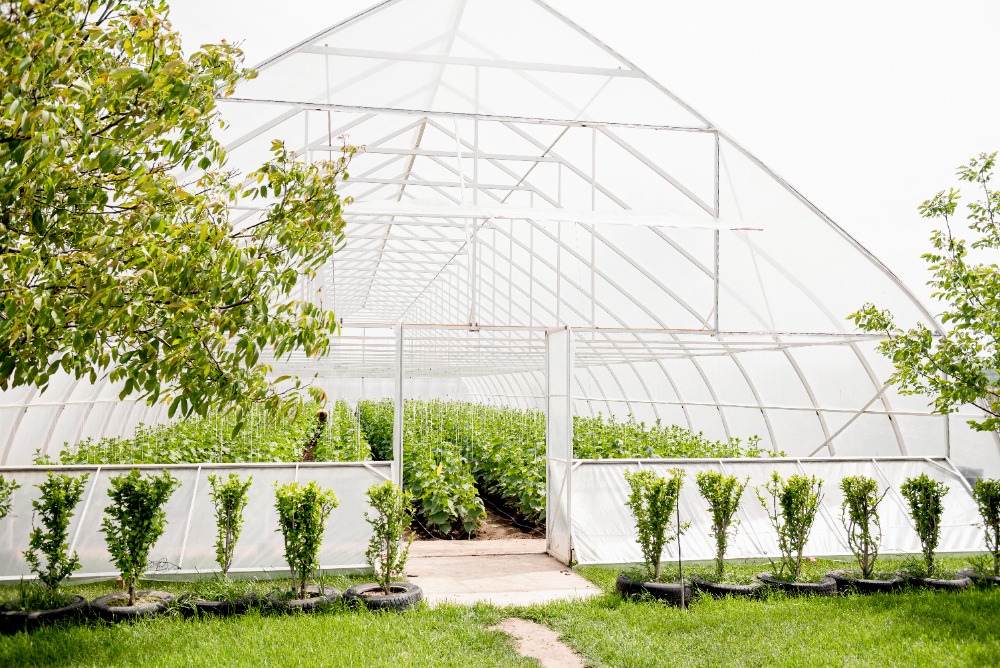Polyhouses have transformed modern agriculture by creating controlled conditions that improve crop output and quality. Choosing the correct poly home is essential for attaining the best outcomes. With so many alternatives, it might be difficult to determine which poly house is best for your individual needs. This tutorial will help you understand the important aspects to consider while choosing the best poly house for your crops. Whether you’re looking for a poly house manufacturer or purchasing poly house accessories, this blog has you covered.
1. Understand Your Crop Requirements
The first step in selecting the right poly house is to understand your crops’ individual requirements. Different crops thrive in different environments. For example:
- Vegetables such as tomatoes, cucumbers, and peppers require precise temperature and humidity management.
- Flowers like roses and orchids require precise light and ventilation regulation.
- Exotic fruits such as strawberries and blueberries grow in certain microclimates.
Discuss your crop requirements with a reputable poly house manufacturer to establish the best sort of poly house design and features.
2. Choose the Right Type of Poly House
Poly houses come in a variety of styles, each tailored for a unique function. Here are the most popular types:
- Naturally Ventilated Poly House: This kind is best suited to moderate temperatures and relies on natural airflow for ventilation. It’s inexpensive and appropriate for crops that don’t require precise temperature control.
- Fan & Pad Poly House: Equipped with cooling devices, this variety is ideal for crops that require a regulated environment in hot, dry conditions.
- Tunnel Poly Houses: It’s ideal for small-scale farming because it’s simple to set up and inexpensive, making it popular with beginners.
- Hi-Tech Poly House: This advanced version has automated irrigation, temperature, and humidity management. It is ideal for high-value crops and large-scale farming.
Consult with expert poly house providers to determine which type is appropriate for your demands and budget.
3. Consider the Climate in Your Region
The climate in your area influences the type of poly home you should select. For example:
- In warmer climates, you may want a poly house with efficient cooling systems such as fans and pads.
- Heating systems and insulation are critical in cold climates to keep crops from freezing.
- For places with heavy rainfall, a strong structure with adequate drainage is required.
A reputable poly house manufacturer can assist you in picking a construction that is intended to resist the climatic difficulties of your area.
4. Quality of Materials and Construction
Your poly house’s durability and performance are determined by the quality of its materials and construction. The key factors to assess are:
- Choose UV-stabilized and high-density polyethylene films for increased durability and light diffusion.
- Galvanised steel is the most robust and rust-resistant material for the frame.
- Polyhouse Accessories: Invest in high-quality accessories like shade nets, watering systems, and temperature control devices to make your poly house more functional.
Partnering with recognised poly house suppliers guarantees you receive high-quality materials and accessories that match industry requirements.
5. Focus on Ventilation and Irrigation Systems
Proper ventilation and irrigation are essential for creating a healthy atmosphere within the poly home. Consider the following.
- Ventilation: Make sure your poly house has enough holes or vents for air movement. Automated ventilation systems can improve the efficiency of this operation.
- Irrigation: Poly homes benefit from drip irrigation and misting systems, which allow equal water distribution while conserving water.
Discuss your requirements with a poly house maker who can tailor these systems to your crops.
6. Budget and ROI
While it is tempting to go with the lowest option, investing in a high-quality poly home has long-term benefits. Calculate your budget and factor in the return on investment (ROI). Factors influencing ROI include:
- The types of crops you intend to plant.
- Expected yield and market demand.
- The longevity of the poly home and its accessories.
Reputable poly house providers can assist you in finding cost-effective alternatives that do not compromise on quality.
7. Seek Expert Guidance
Choosing the ideal poly home requires a combination of technical and practical concerns. It is always advisable to get advice from subject matter specialists. Consult with professional poly house manufacturers who can provide tailored solutions to your requirements.
8. After-Sales Support and Maintenance
A poly house is a long-term investment that requires adequate upkeep to ensure its longevity. Ensure that the poly house manufacturer or supplier offers after-sales service, such as installation, repairs, and maintenance advice. High-quality poly home accessories should also have guarantees for further peace of mind.
Conclusion
Choosing the correct poly house for your crops might make a big difference in your agricultural performance. You may create a perfect growing environment by analysing your crop requirements, selecting the appropriate type of poly house, taking climate into account, and investing in high-quality materials and accessories. Work with reputable poly house manufacturers and suppliers to guarantee you get the most out of your investment. With the correct decisions, your poly home can become a foundation for sustainable and profitable agriculture.




